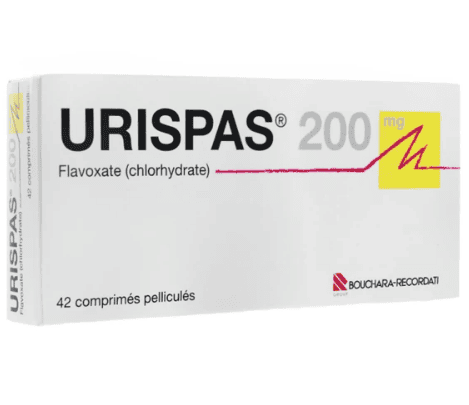This is an automatically translated article.
The article was professionally consulted by Specialist Doctor I Pham Thi Yen - Department of Obstetrics and Gynecology - Vinmec Hai Phong International General HospitalDaily postpartum pelvic floor exercises help women regain control of the bladder and bowels, increase vaginal sensation, help women have a satisfying sex life and easy orgasms. Doing exercises every day from now on is the best way to restore pelvic floor postpartum.
1. The important function of the pelvic floor
The pelvic floor is a network of muscles, ligaments and tissues along the pelvis. The important function of the pelvic floor is to support the pelvic organs, including: uterus (womb), vagina, bladder (bladder), intestines. The spaces on the pelvic floor are the passageways for the urethra, vagina, and anus.
The muscles in the pelvic floor are stretched during pregnancy and childbirth. The baby's weight, hormone changes, and the effort of pushing during labor all put pressure on this important part of the body. When the pelvic floor is weakened or damaged, women can experience urinary incontinence (incontinence), easy "gas," or even incontinence (more rarely).
If the pelvic floor is severely weakened, usually after several pregnancies, the pelvic organs are at risk of sliding down into the pelvis. This is known as genital or pelvic organ prolapse, where the uterus, intestines, and bladder press on the vaginal wall, causing the organ to sag to the point of protrusion.
The strength of the pelvic floor decreases with age, so women are more likely to have pelvic floor problems in old age than soon after giving birth. Right now, doing postpartum pelvic floor exercises every day is the best way to protect yourself from prolapse in the years to come. You can ask your midwife, obstetrician, or female health physiotherapist for guidance on how to improve your pelvic floor, especially if you have symptoms of genital prolapse after giving birth.
2 . When should I start doing pelvic floor exercises after giving birth?
Women can start doing pelvic floor exercises after giving birth as soon as they feel comfortable. In fact, despite the many benefits and absolute safety, most mothers often do not think about or take the time to do this. Know that you automatically use the pelvic floor every time you cough or sneeze. So feel free to start practicing as soon as you feel you're ready.
Because the nerves are already stretched when pushing the baby out, you may not feel the pelvic floor muscles at first. Even if you can't notice any changes, you should still stick to the practice. Postpartum pelvic floor exercises will help:
Prevent and treat urinary incontinence Improves blood circulation to the perineum, helps reduce swelling and bruising if present Restores strength and restores pelvic floor after childbirth. Women who have had a caesarean section still need to do this exercise because pregnancy puts a lot of pressure on the pelvic floor. Because the pelvic floor isn't painful and the muscles are still strong, it's easier for a cesarean mom to exercise than someone who's given birth vaginally. If there is no long labor before delivery, the nerves of the pregnant woman will not be affected. You can try squeezing the pelvic floor after your midwife has removed the catheter.
It's never too late to start, even if you haven't exercised during pregnancy or after a previous birth. If you start today, you can still get all the benefits of postpartum pelvic floor exercises.

3. Instructions for performing postpartum pelvic floor exercises
To start exercising your pelvic floor muscles, you can lie on your back or on your side. Some people also say soaking in a relaxing bath can make the move easier.
Inhale, then gently squeeze the pelvic floor muscles while exhaling. Focus on pulling the pelvic floor muscles in a rhythmic motion, similar to when holding urine or suppressing a "far". Squeeze your pelvic floor muscles and hold for 4-5 seconds, but continue to inhale and exhale as usual. Once you're familiar with the postpartum pelvic floor exercise, squeeze the pelvic floor for 8-10 seconds each time. Try not to engage the abdominal muscles. If you find yourself squeezing your abs (above your navel) or your glutes, you're doing it the wrong way. When you can hold the contraction for 10 seconds, try doing 5 quick contractions in a row. Quick squeezes help you restore your pelvis after giving birth, thereby controlling your muscles when coughing, sneezing, laughing or lifting objects. You should feel your muscles relax at the end of each squeeze. In case you can't feel it, try to relax the muscle at the end of each rep, while reducing the time until you feel the muscle relax, then gradually increase it.
Maximum goal is 10 squeezes in 10 seconds, followed by 10 quick contractions, 3 times a day. Try to tighten the muscles as much as you can, but continue to breathe normally throughout the exercise. If you lose control of your breathing midway, stop and start over.
You may not see much change - not even feel anything, when doing the exercise for the first few days. However, your efforts today will pay off over time. It can take 6 - 12 weeks for muscle building to be noticeable, so stick with it.

4. Beware of overactive pelvic floor muscles
If you constantly contract the pelvic floor muscles involuntarily, it can cause this organ to overwork. It is usually caused by muscle tension, pain, or tissue damage. Perineal incision and suturing or pelvic pain can also cause pelvic floor muscle overstrain.
If you have pain in the first few weeks after giving birth, you can tighten your pelvic floor muscles to control the pain. But if you hold the muscles too tight and for too long, the pelvic floor can't function properly, increasing the risk of a host of problems such as:
Pain during defecation Pain during sex Injury, difficulty inserting tampons You This can be prevented by focusing on the relaxation part of postpartum pelvic floor exercises. After squeezing the pelvic floor, relax your muscles completely and let them rest for about 10 seconds before starting the next exercise. Do not rush and remember to breathe normally throughout the exercise.
5. When should a doctor check the pelvic floor muscles?
See your doctor if, some time after giving birth, you still:
Can't feel or tighten your pelvic floor muscles properly Urinary incontinence Pain in the perineum Feeling heaviness in the vagina Problems passing stools Feeling anxious or depressed about the effects of childbirth on your body A physical therapist will be able to assess your pelvic floor and teach you how to properly exercise and treat any problems. In addition, you should also see your doctor if you have any of the following:
Forceps needed during delivery Severe perineal tears Frequent leakage of urine during or before pregnancy Women with difficult births or severe perineal tears are also at risk for fecal incontinence. Postpartum mothers should not suffer in silence. You need care and monitoring to restore your pelvic floor after giving birth, especially to let your doctor know if the condition does not improve despite exercise and treatment.

After 9 months and 10 days of heavy weight, pregnant women go into labor and face a level of labor pain comparable to 20 broken ribs at the same time. In order for the birth to go smoothly and safely, pregnant women need to understand:
How the labor process takes place, how long does it usually take to have a normal delivery or caesarean section, to protect the best health for the unborn baby. Methods to relieve pain during childbirth, limit pain and relieve psychological pressure during labor. The way to push and breathe during childbirth is usually the right way so that the labor takes place quickly, the pregnant woman does not lose strength during childbirth. How to control postpartum uterine contractions in the shortest time. How to take care of the perineal suture does not cause infection and dangerous complications. Early postpartum re-examination to detect dangerous abnormalities such as residual placenta, missing gauze. Take care of newborn until full month healthy. To ease the pain of childbirth, Vinmec offers a full Maternity program with a complete "painless delivery" service during and after birth using non-morphine epidural and sedation techniques. ashamed. During the birth process, the mother will be guided by the midwives on how to push and breathe properly, the baby will be born in just 10-15 minutes. After birth, the baby will be cared for in a sterile room before being returned to the mother.
Pregnant women will rest in a high-class hospital room, designed according to international hotel standards, 1 mother 1 room with full facilities and modern equipment. Mothers will be consulted by nutritionists on how to feed the baby before being discharged from the hospital. Postpartum follow-up with both mother and baby with leading Obstetricians and Pediatricians.
Please dial HOTLINE for more information or register for an appointment HERE. Download MyVinmec app to make appointments faster and to manage your bookings easily.
Reference source: babycentre.co.uk













